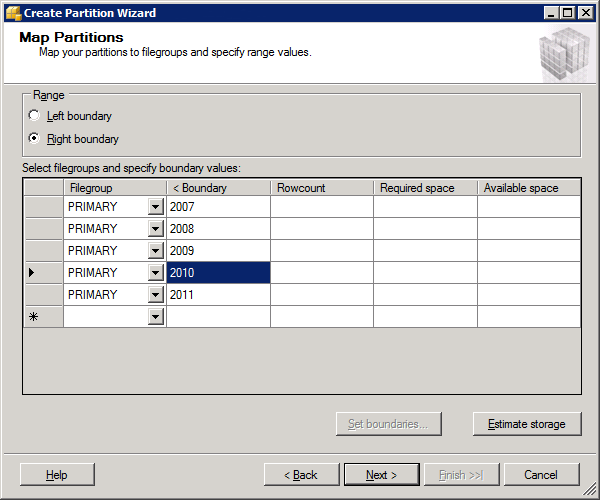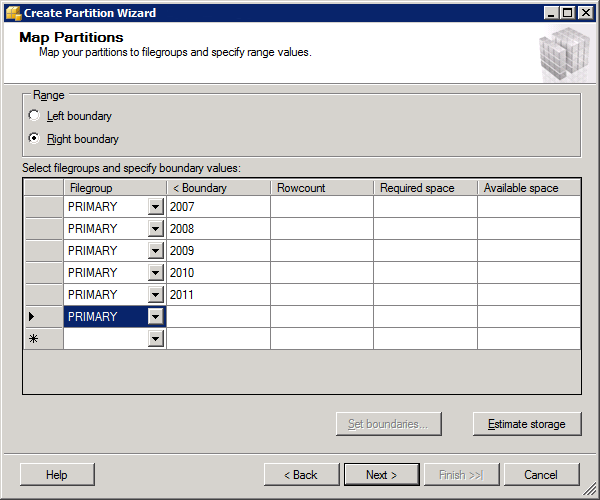When partitioning tables in Microsoft SQL-server 2008 you could get this error when your trying to move to the next step after mapping your partitions.
The number of filegroups or range values is not valid. Enter an extra filegroup in addition to the number of boundary values.
Your partition mapping will probably look something like this.

The error occurs because you haven’t choosen a filegroup for the last empty partition (the one after 2011). Your partition mapping should look like this.

In SQL the partition function will look like this.
CREATE PARTITION FUNCTION [<pf_Year>](varchar(4))
AS RANGE RIGHT
FOR VALUES (N’2007′, N’2008′, N’2009′, N’2010′, N’2011′)


